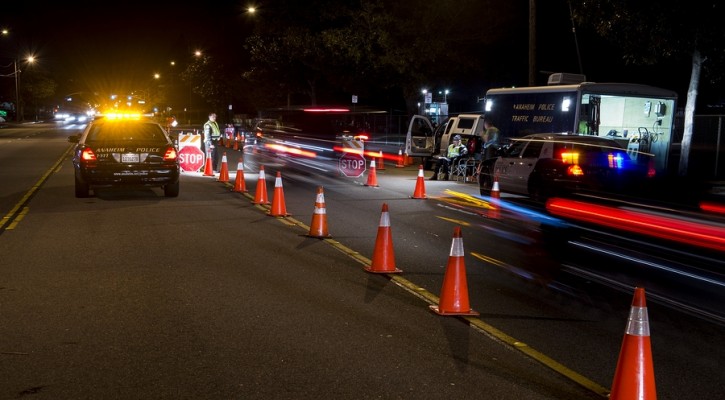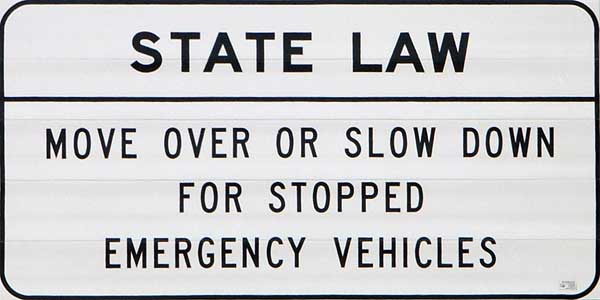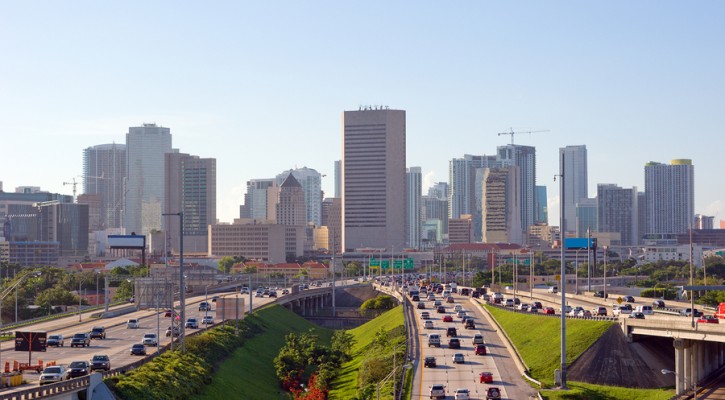Category Archive: Uncategorized

DUI Checkpoints Praised By Doctor In Editorial
February 20, 2015
A Florida Lawyer recently posted his advice to drivers who encounter DUI checkpoints. His advice; refuse to lower your windows, post a sign that says you will not cooperate, and request a lawyer. His advice has gone viral but is it good advice? Is driver safety being served by his advice?
Dr. Barron H. Lerner, professor of medicine and population health at the NYU School of Medicine has posted an editorial in Forbes that not only refutes the lawyer’s advice but urges state lawmakers to pass laws making refusal to cooperate in DUI checkpoints a crime. In his words, “Drunk driving checkpoints should be celebrated, not avoided.”
In 2012, the latest year for which there is data, the National Highway Transportation Safety Administration (NHTSA) recorded 10,322 highway deaths, including 239 children under the age of 14, due to drunk driving. That’s thirty-one percent or almost one-third of the total 33,561 traffic deaths in 2012. According to NHTSA, an alcohol related fatality occurred every 51 minutes in 2012. While alcohol fatalities have gone down significantly since the 1980s, they are still too high.
According to the Centers for Disease Control and Prevention (CDC), there are approximately 300,000 incidents of drinking and driving on America’s roads each day.
Studies have shown that states and localities with high visibility enforcement, including DUI checkpoints, have a lower number of drunk drivers on the road compared to areas with lower levels of DUI enforcement. Drivers in those areas with high enforcement are less likely to take a chance on drinking and driving if they know there’s a good likelihood that they may be stopped.
DUI checkpoints and vigorous enforcement of the laws make the roads safer for everyone. It seems to be a logical conclusion that only those who have been drinking and have a fear of arrest for DUI would feel a need to refuse to cooperate at a DUI checkpoint. Those people are why the DUI checkpoints exist in the first place.
To read Dr. Lerner’s editorial, visit: Why Drunk Driving Checkpoints Should Be Celebrated, Not Avoided

Crash-free Car Plans Announced By Automakers
September 11, 2014
Crash-free or almost crash-free cars may become a reality sooner than we thought. In previous articles, we discussed the shift by automotive engineers from designing cars to protect the occupants in a crash to avoiding the crash altogether through the use of collision-avoidance technology. Recently, two automakers announced plans to build crash-resistant and almost driver-free cars within the next couple of years. It seems that, while the Google car has been getting all the press, engineers from the mainstream auto manufacturers have been developing crash-free technology of their own.
Toyota announced last week that they will include collision-avoidance technology, currently only available in its Lexus luxury line, in the entire US model lineup beginning in 2017. The Lexus line currently has an active “Pre-Collision System.” If the onboard radar and cameras detect an imminent frontal crash, the system will warn the driver, boost brake pressure, and tighten up the seat belts. If the driver fails to heed the warning, the system will apply the brakes to avoid or at least reduce the crash forces of an impact. This differs from “passive” collision-avoidance systems that only warn the driver but otherwise, take no action to avoid the crash.
General Motors has taken it a step further in an announcement that their Cadillac line will contain technology that allows driving without hands on the steering wheel or feet on the pedals. GM’s technology, known as “Super Cruise,” can control the vehicle’s speed, steering, and braking at speeds up to 70 mph. The technology is designed to work both on the open road and in stop-and-go traffic. GM also announced that they will be the first auto manufacturer to equip their vehicles with vehicle-to-vehicle (V2V) technology within two years.
It’s not just a desire to protect the automotive public that’s driving these innovations, there are ulterior motives as well. Some automotive industry analysts feel that GM’s announcement is an effort to restore public trust after the recall scandal that they experienced earlier this year. Another reason for going forward with this type of technology is that the Insurance Institute for Highway Safety (IIHS), announced that, beginning in 2015, in order to get a “Top Safety Pick +” rating, vehicles will have to be equipped with auto-braking systems.
These technological innovations aren’t without their challenges. Last month, cyber-security experts raised the alarm over the ability of hackers to gain control of a vehicle’s computer system and possibly cause a crash. Earlier this week, David Friedman, acting administrator of the National Highway Traffic Safety Administration (NHTSA) announced that he sent a letter to the CEOs of every automaker asking that they come up with an automotive cyber-security plan by the end of the year.
Aside from the life-saving benefits of the crash-free systems, the technology will offer other benefits as well. Truly driverless cars will save time and money for consumers in several ways. Once all vehicles are equipped with V2V and collision avoidance technology, experts feel that, by maintaining a safe following distance and regulating speed, traffic will move much more smoothly and traffic jams could become a thing of the past. By not having to idle in stop-and-go traffic, miles per gallon should increase and braking systems will experience less wear. With crash-free technology, insurance rates should go down significantly, although it raises the question of who will be held to blame if a crash should occur, the driver or the manufacturer’s computer programmer.

Traffic Crashes Cost Americans $900 Per Person
June 13, 2014
For the first time since 2000, the National Highway Traffic Safety Administration (NHTSA) has completed a study on the economic cost of traffic crashes in the US. Even though the number of traffic deaths per year have declined, the costs of those crashes have increased. According to NHTSA, the total cost of traffic crashes is $871 billion in economic loss and societal harm. Broken down, those costs include $277 billion in economic costs (almost $900 for every person living in the US) and $594 billion in harm from the loss of life and the pain and decreased quality of life due to injuries.
One may wonder how these costs impact individual Americans who drive safely and never have a crash. Even if you have a safe driving record, you still pay for these costs in the following ways:
- Taxes – Paying for police and fire rescue, courts costs, replacing damaged highway guard rails and light poles, uninsured medical costs, and disability payments all adds up.
- Insurance – Even though you may be a safe driver, your insurance rates are based on the risk of traffic crashes in your area. If you live in an area with heavy traffic and lots of crashes, your insurance rates will be higher.
- Lost productivity – If you’ve ever been stuck on the freeway and were late for work or missed an important meeting or if you’ve ever had to pick up the workload for another employee who is out because of a crash, you paid because time is money. Sitting in a running car while waiting for a crash to clear burns gas and causes wear and tear on a vehicle.Those costs can be hard to determine but they cost nevertheless.
The NHTSA report also shows how how much individual driving behaviors such as distracted driving, drunk driving, speeding, and seatbelt use cost.

Car Crashes But Driver Still Maintains Control Of Cell Phone
March 26, 2014
This story from a tow truck operator shows how distracting a cell phone can be and why the “Move Over Law” is important not just for police and fire but for tow trucks as well. Read more: Tow truck driver’s scary tale of oblivious driver

Florida’s Population and Traffic Issues
February 4, 2014
A recent story in the NY Times said that Florida is due to pass New York in population sometime in 2014 making Florida the third most populous state in the nation after California and Texas. The impact of this population growth is already being felt on Florida’s drivers.
Florida already holds the dubious distinction of being the third worst state for traffic deaths behind Texas and California and has long led New York in the number of traffic fatalities per year. In fact, in the total number of traffic fatalities, teen deaths, alcohol related deaths, and pedestrian deaths, Florida more than doubles New York in each category. There are several reasons for this.
Not only is Florida’s population growing faster than New York’s, due to Florida’s popularity as a tourist destination, the permanent population of more than 19 million residents is increased by more than 80 million additional tourists per year. All of those visitors, who either drive down or rent a car once they arrive, put a strain on Florida’s roads, especially in the popular tourist destinations of Orlando and South Florida.
The tourist population is a blessing and a curse for Florida. For many tourists, having a good time means drinking and, unfortunately, it also means drinking and driving; a big problem for Floridians.
A significant portion of Florida’s growth, especially in the southern half of the state, is made up of immigrants from all around the Caribbean basin and Latin America. Many of these immigrants have either never driven previous to their arrival in the state or drove in countries where traffic laws and customs were vastly different from ours. However, foreign immigrants aren’t the only problem; immigrants from other states also bring their bad driving habits with them when they move to Florida.
Florida’s roadways aren’t keeping up with the growth rate. Like governments everywhere else, Florida’s legislature is loath to spend money on infrastructure projects. Commuters in cities like Jacksonville that have a lot of rivers, marsh lands, and wide creeks to cross find traffic funneling to one of the very few bridges and dealing with massive traffic tie-ups as a result. Citizens of Florida want and appreciate new roadways and bridges; they just don’t want to pay for them.
Along with roadway infrastructure projects, the Florida legislature also seems to be very reluctant to pass motor vehicle safety laws. Years after most other states, Florida finally enacted an anti-texting law in 2013 but it carries a minor penalty and is extremely difficult to enforce. Florida’s Graduated Driving License laws (GDL) designed to give teens more experience before driving on their own and carrying passengers also lag behind other states. As a result, Florida also stands third in teenage traffic deaths in the US.
Over the coming months, we will explore these and other Florida related traffic issues in more depth. We will look at what other states have done and offer suggestions to lower Florida’s extremely high traffic fatality rate.
